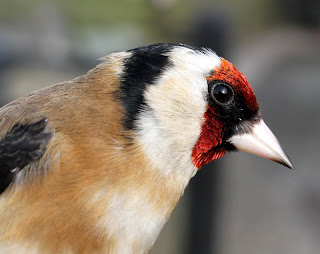Early March can be uneventful; it’s often a case of waiting days for migrant birds that may have appeared on the south coast of England but have yet to arrive up here in the “bleak north”. So it was this morning where in the face of a less than ideal north easterly wind and grey skies, I gave the Pilling sea wall a good grilling for migratory birds but found only one or two I could say were definitely “on the move”. However, March is a good time to gather early indications of the numbers and territories of local breeding birds like Lapwing, Skylark, Oystercatcher, Shelduck and Redshank, before they all hide themselves in the rapidly growing vegetation of April and May.
Pairs of both Goldeneye and Little Grebe were on the Lane Ends pools, all of them involved in spring shenanigans, the drake Goldeneye head tossing to a seemingly uninterested female, and Little Grebes trilling away in the safety of the pool margins; the grebes will stay, the Goldeneye will soon go, maybe to become one of the 100 or so pairs breeding in Scotland, but more likely fly off to Scandinavia or Western Russia where most Goldeneye breed.
 Goldenye
Goldenye This has been a Siskin winter for sure, more obvious to me because of ringing lots of the little green things without necessarily seeing them whilst out birding, but a single bird this morning called as it left the Lane Ends trees and headed off strongly to the North East. Two Little Egrets were just out on the marsh, and I later saw a third one, but their numbers won’t increase now until July and post-breeding dispersal. Numbers of Pink-footed Geese Over Wyre have been quite low recently, maybe related to the continued cold with the slow growth of green shoots for them to feed on, but more were about this morning and I estimated circa 3,000, but hey who’s counting pinkies to the nth degree?
I followed the sea wall to Fluke Hall and back; there were 65 Lapwing and 2 Golden Plover on the stubble flood, with at least two pairs of the Lapwing pared off from the main group and indulging in their fantastic spring displays. A few of the males have now developed full head adornments and are just wonderful to watch as they strut and pose around their adopted patch of ground. Oystercatchers are also paired up, with at least 4 pairs between Lane Ends and Fluke, some males doing their slow flapping displays, others using fence posts so soon. I also saw several Redshanks alarm calling, the males “bobbing” on the self-same spots of ground as last and previous years.
 Lapwing
Lapwing Oystercatcher
OystercatcherAlong the way I counted 5 fully singing Skylarks, i.e. rising into the sky then gradually falling, rather than the half-hearted songs from the ground or a fence post of late, but I also saw another 12 or more feeding in the edges of the green marsh. It was just here I first heard then saw 3 Meadow Pipit land on the wall ahead of me; Meadow Pipits, the true harbingers of spring up Pilling way, but maybe only if they fly purposefully over, "seep-seeping" then disappear into the distant view of Heysham?
 Meadow Pipit
Meadow PipitOn Worm Pool I hoped for something more exciting than 4 Teal, 2 Shelduck, 2 Redshank, squabbling Moorhens and the aforementioned Little Egret, but sat on the sea wall I noted the far-off Peregrine waiting for the tide to bring in more birds. A patient Peregrine can outwait me most days, so I headed back.
No, it wasn’t the most action-packed hour or two of birding, but working a local patch is often about the mostly seasonal, sometimes fast, often slow and occasionally imperceptible ups and downs that are the lives of birds, and anyway I enjoy it.

















































.jpg)












